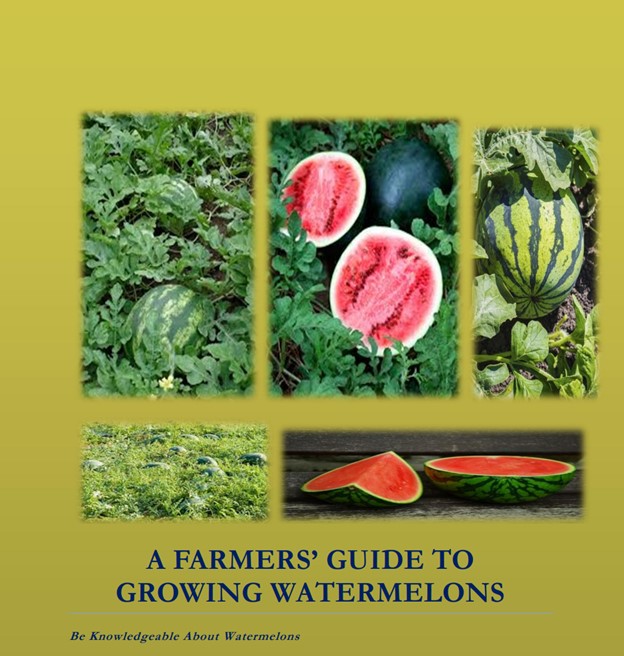A Farmers’ Guide to Growing Watermelons
About the Watermelon
A Farmers’ Guide to Growing Watermelons – Watermelon (Citrullus lantatus) belongs to the family Cucurbitaceae which includes squash, pumpkin and cucumber.
It is a popular dessert vegetable, with year-round availability. Watermelons vary in shape; from globular to oblong. External rind color varies from light to dark green and may be solid, striped or marbled.
The pulp color of most commercial varieties is red. The fruit is generally eaten raw. Watermelon has very high-water content (93ml/100g edible portion). It contains carbohydrates (5mg), calcium (8mg), phosphorous (9 mg), ascorbic acid (8 mg) and vitamins (0.64 g) per 100 g of edible portion.
Watermelons need five things to grow and produce fruit: sun, water, bees, nutrients, and a lot of space! They thrive in sandy or sandy loam soil. Give each plant at least 5 feet of space, as their vines spread rapidly. Watermelon can be grown from seed or transplants from a nursery. Honeybees must pollinate the watermelon blossoms for fruit to be produced.
Common Watermelon Growing Areas in Uganda
The fruit is grown in most parts of the Country however it’s mostly grown in the following areas.![]() Luweero
Luweero![]() Mpigi
Mpigi![]() Kayunga
Kayunga![]() Bugerere
Bugerere![]() Mayuge
Mayuge![]() Masaka
Masaka![]() Mubende
Mubende![]() Masindi
Masindi![]() Busheny
Busheny
Common Watermelon Varieties (cultivars) in Uganda
Selecting the best watermelon variety is the most important decision made by a farmer. Planting a variety that is not suited for the available market and the particular production situation leads to lower profits or possibly crop failure.

